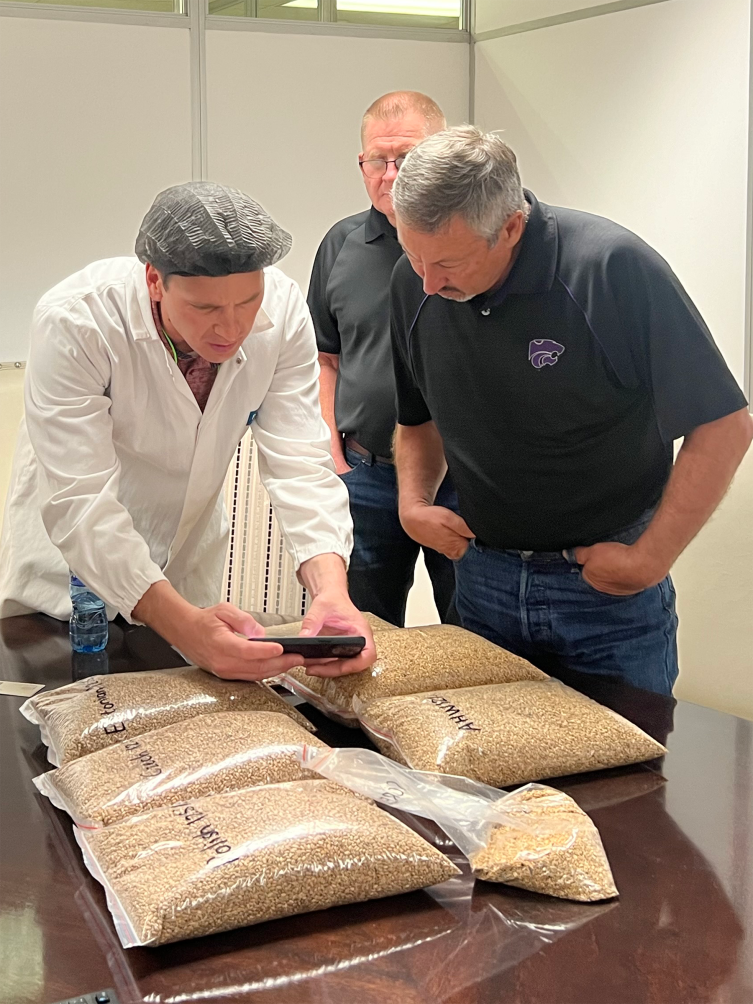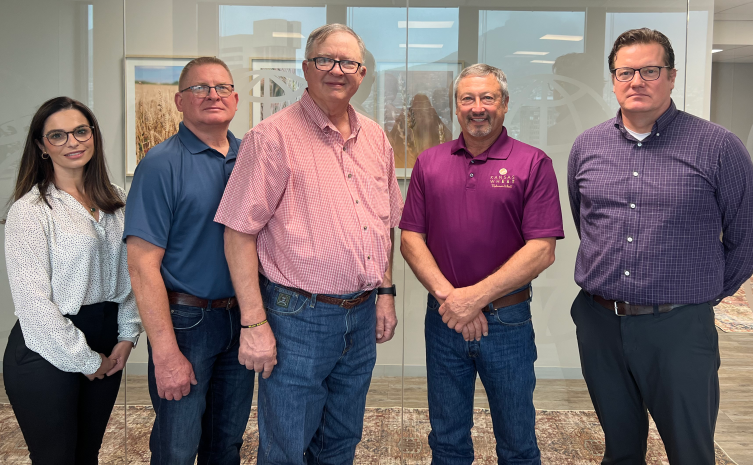Breadcrumb
- Home
- Meeting at the Mill
Developing international markets is not so dissimilar to planting a wheat crop, as Gary Millershaski, farmer and chairman of the Kansas Wheat Commission, learned during a recent board team trade mission to Sub-Saharan Africa organized by U.S. Wheat Associates (USW). Both require substantial investments upfront, and it takes time to reap the returns. Ultimately, however, it is the people who take the time to share their experiences and expertise with others that allow farmers and end-users to weather the difficulties of the day.
“It’s not what we did yesterday, but it’s the knowledge we accumulate today to make us better understand how to deal with (the market) and make more sales tomorrow,” Millershaski said.
Millershaski joined wheat farmers Bill Schroeder from Ohio and RJ Parrish from Oklahoma on the 10-day Sub-Saharan Africa Board Team trade mission in March. The mission was led by USW Director of Programs Catherine Miller. The team was connected to millers and wheat buyers in South Africa and Nigeria by USW Regional Director Chad Weigand and USW-Cape Town Programs and Marketing Specialist Domenique Opperman.
Sub-Saharan Africa covers 42 countries on the African continent and is home to a population of 1.1 billion people, which continues to be fast-growing and young. The region has averaged five percent market growth in wheat imports since the 2012/2013 marketing year. But, the market is extremely competitive, and the European Union has dominated exports to Sub-Saharan Africa for the last two years.
Nigeria is the largest individual market within the region and traditionally imports a substantial amount of wheat. Thanks in large part to USW’s trade servicing and technical assistance and support from Kansas Wheat by organizing and hosting technical trainings and in-state trade team visits, Nigeria ranked as the fourth largest buyer of U.S. wheat in the 2021/2022 marketing year with a total of 65.15 million bushels (1.773 million metric tons), representing a 30 percent market share.
Shifting macroeconomic factors, however, are hurting the Nigerian economy, including inflation of more than 21 percent, a devalued currency that fell more than 70 percent against the U.S. dollar and escalating interest rates. When it comes to wheat, higher food prices have driven local consumption down. Millershaski reported that Nigerian flour mills — some of the largest in the world — were only running at 60 to 70 percent efficiency.
Those factors combined have meant a shift to importing the lowest-cost wheat in the world, in this case, of Baltic Sea origin. As a result, Nigerian imports of U.S. wheat are down more than 68 percent from the same time the year prior at 8.93 million bushels (243,000 metric tons) thus far in the 2023/2024 marketing year, according to the USW commercial sales report from March 21, 2024.
Despite the downturn, the USW board team members were welcomed by millers who purchase U.S. wheat as the team toured their facilities. These flour mills send regular representatives to the United States, including Kansas, to check out the growing wheat crop and snag rides in combines like Millershaski’s. Those relationships, developed by these back-and-forth trade missions, are part of that long-term investment between the two nations that helps weather economic difficulties and short harvests.
“We’ve sold a lot of wheat from Kansas to Nigeria, but not in the last year and a half,” Millershaski said. “It took us eight hours on two flights to get into Nigeria. The thing that really got me was that all of the mills were very happy to meet with us. And I was impressed.”

The earlier half of the USW board team mission provided an even closer-to-home moment of hope. On a tour of a flour mill in Durban, South Africa, the team met up with Shawn Thiele, associate director and flour milling and grain processing curriculum manager for K-State’s IGP Institute. Thiele was there as part of a technical assistance project to help South African mills improve their milling efficiency, including by running samples of U.S. wheat shipped over in containers. Working with flour millers is an important part of USW’s efforts in Africa, especially with up-and-coming millers who are just learning their trade.
“It was so cool. Here we are in this mill in South Africa, and we see Shawn showing them how to adjust their equipment to be more efficient,” Millershaski said. “To me, that’s what USW is all about — helping the buyers make sure what they are getting and getting the assistance they need — whether it’s procurement or milling classes.”
Millershaski and the other two wheat farmers on the trade mission returned home with a more global view of the struggles and success in the wheat industry. And as their wheat crops green up this spring, those millers overseas will certainly be keeping an eye out for a hopefully bountiful harvest.
Learn more about the USW board team trade mission at uswheat.org.
###
Written by Julia Debes for Kansas Wheat

(left to right) Domenique Opperman, Bill Schroeder, RJ Parrish, Gary Millershaski and Chad Weigand
